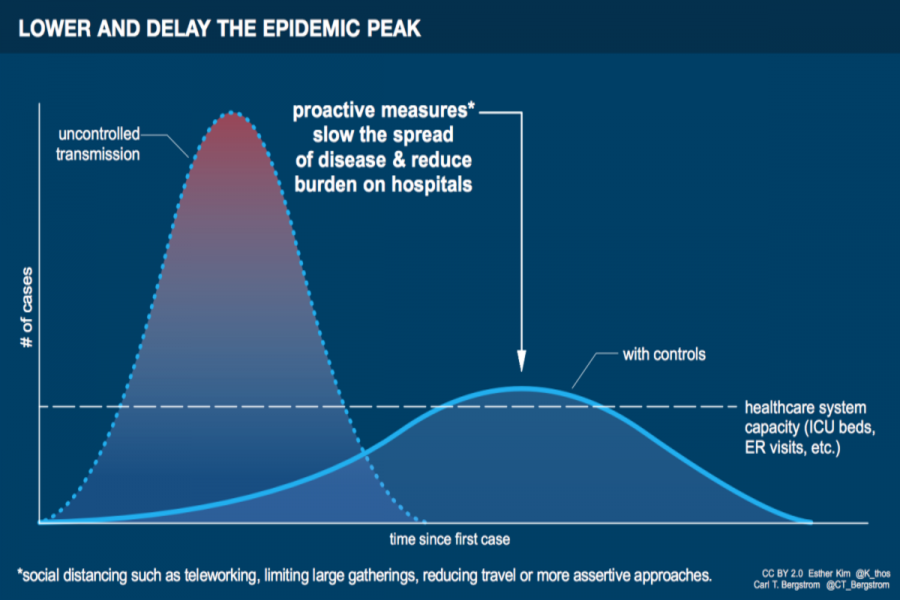Social Distancing
With the coronavirus spreading more every day, health experts highly suggest social distancing.
March 21, 2020
With the coronavirus epidemic plaguing our globe, the White House Coronavirus Task Force has issued a policy entitled “15 Days to Slow the Spread.” A central part of that plan involves keeping away from others, which is where social distancing comes into effect.
Social distancing is recommended by all experts to try and slow down the spread of the COVID-19. Social distancing explains why most events and tournaments have been canceled in our community. It is also why many parents are working from home and students are not going to school.
Social distancing requires that people work to avoid large crowds. Staying home and making sure to be six feet away from others is essential to steer clear of the coronavirus. If it is necessary to have a gathering, no more than 10 people are recommended to be in the room.
“Forget hugs and handshakes. Use foot taps or jazz hands or place your hand over your heart to greet friends and colleagues. Work at home, if you can. Wear gloves when out and yes, wash your hands meaningfully (at least 20 seconds; song optional) and often. Travel with hand sanitizer and use it. Skip concerts, conferences and soccer games,” explains Diane Mapes of Hutch News Stories. Or as The Atlantic simply says: “Cancel everything. Prepare, don’t panic.”
Some people are taking this to heart, and refuse to leave their homes. Their concern is understandable, considering how fast the coronavirus is spreading. As of March 18th, there were already 19,624 cases just in the USA, invoking fear in our nation.
Other people feel that precautions are exaggerated. Though they still may take care to wash their hands more often, they might not be fearful of holding small gatherings, searching toilet paper at Costco, or simply socializing among other people.
Either way, social distancing is still an important part of eliminating the disease. It helps to flatten the ever-rising curve of infections around the world.
“Flattening the curve” is a term used to describe a bell curve on a graph. The number of people who have the COVID-19 rises every day, and when graphed, this creates a rising line in the shape of a bell. While a bell curve goes up, it also must come down. The term “flattening the curve” represents when the number of infections stops rising and either stays at one central point or, even better, begins to fall.
According to LiveScience, “A flatter curve assumes the same number of people ultimately get infected, but over a longer period of time. A slower infection rate means a less stressed health care system and fewer sick people being turned away.”
If people take social distancing seriously, interaction is minimized. As people test positive for the coronavirus, they will put fewer people at risk.
If necessary precautions are taken, fewer people risk catching the virus. This means doctors will likely have fewer patients allowing them to focus on those who need immediate medical care.
All in all, social distancing is effective and important in preventing the spread of COVID-19. Keeping away from large crowds and social gatherings will likely minimize contagion throughout the country. Though the isolation may feel grueling, it will help during a time of stress and confusion.
As they’ve said: wash your hands (if you cough afterwards, wash them again), and stay six feet away from all people. Hopefully, with this put into effect, the coronavirus will pass faster than experts predict.






